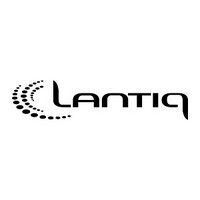PEF2054NV21XK Lantiq, PEF2054NV21XK Datasheet - Page 37

PEF2054NV21XK
Manufacturer Part Number
PEF2054NV21XK
Description
Manufacturer
Lantiq
Datasheet
1.PEF2054NV21XK.pdf
(269 pages)
Specifications of PEF2054NV21XK
Lead Free Status / Rohs Status
Compliant
- Current page: 37 of 269
- Download datasheet (2Mb)
PEB 2055
PEF 2055
Operational Description
The number of time slots per 8-kHz frame is programmable from 2 to 128. In other words,
the CFI-data rate can range between 128 kbit/s up to 8.192 Mbit/s. Since the overall
switching capacity is limited to 128 time slots per direction, the number of CFI- ports also
depends on the required number of time slots: in case of 32 time slots per frame
(2.048 Mbit/s) for example, four (EPIC-S: two) highways are available, in case of
128 time slots per frame (8.192 Mbit/s), only one highway is available. Usually, the
number of bits per 8-kHz frame is an integer multiple of the number of time slots per
frame (1 time slot = 8 bits).
The timing characteristics at the CFI (data rate, bit shift, etc.) can be varied in a wide
range, but they are the same for each of the four (EPIC-S: two) CFI-ports, i.e. if a data
rate of 2.048 Mbit/s is selected, all four (EPIC-S: two) ports run at this data rate of
2.048 Mbit/s. It is thus not possible to have one port used in IOM-2 line card mode
(2.048 Mbit/s) while another port is used in IOM-2 terminal mode (768 kbit/s)!
The clock and framing signals necessary to operate the configurable interface may be
derived either from the clock and framing signals of the PCM interface (PDC and PFS
pins), or may be fed in directly via the DCL and FSC pins.
In the first case, the CFI data rate is obtained by internally dividing down the PCM clock
signal PDC. Several prescaler factors are available to obtain the most commonly used
data rates. A CFI reference clock (CRCL) is generated out of the PDC-clock. The PCM-
framing signal PFS is used to synchronize the CFI-frame structure. Additionally, the
EPIC generates clock and framing signals as outputs to operate the connected
subscriber circuits such as layer-1 and codec filter devices. The generated data clock
DCL has a frequency equal to or twice the CFI data rate. The generated framing signal
FSC can be chosen from a great variety of types to suit the different applications: IOM-2,
multiplexed IOM-1, SLD, etc.
Note that if PFS is selected as the framing signal source, the FSC signal is an output
with a fixed timing relationship with respect to the CFI data lines. The relationship
between FSC and the CFI frame depends only on the selected FSC-output wave form
(CMD2 register). The CFI offset function shifts both the frame and the FSC output signal
with respect to the PFS signal.
In the second case, the CFI data rate is derived from the DCL-clock, which is now used
as an input signal. The DCL clock may also first be divided down by internal prescalers
before it serves as the CFI reference clock CRCL and before defining the CFI data rate.
The framing signal FSC is used to synchronize the CFI frame structure.
Semiconductor Group
37
Related parts for PEF2054NV21XK
Image
Part Number
Description
Manufacturer
Datasheet
Request
R

Part Number:
Description:
Manufacturer:
Lantiq
Datasheet:

Part Number:
Description:
Manufacturer:
Lantiq
Datasheet:

Part Number:
Description:
Manufacturer:
Lantiq
Datasheet:










